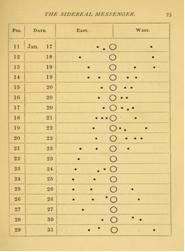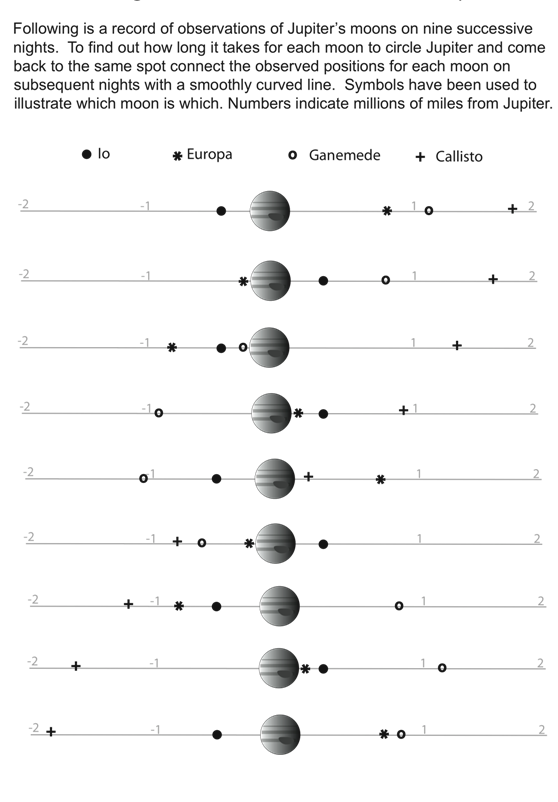- 1610: Galileo
- 1676: Ole Rømer
- 1687: Isaac Newton
- 1781: William Herschel
- 1838: Friedrich Bessel
- 1861: William and Margaret Huggins
- 1912: Henrietta Leavitt
- 1917 Einstein
- 1920: Harlow Shapley
- 1929 Edwin Hubble
- 1948: Ralph Alpher
- 1949: Fred Hoyle
- 1963: Maarten Schmidt
- 1964: Arno Penzias and Robert Wilson
- 1978: Vera Rubin and Kent Ford
- 1989: Margaret Geller and John Huchra
- 1992: John Mather and George Smoot
- 1995: Robert Williams
- 1998: Saul Perlmutter and Brian Schmidt
- 2010: Wendy Freedman
1610 Activity: Observing the Moons of Jupiter
 Galileo recognized that his observations of Jupiter’s four moons supported the controversial theory of Copernicus—that Earth and all the other planets revolve about the Sun.
Galileo recognized that his observations of Jupiter’s four moons supported the controversial theory of Copernicus—that Earth and all the other planets revolve about the Sun.
“But now we have not just one planet rotating about another [the Moon about Earth] while both run through a great orbit around the Sun; our own eyes show us four stars which wander around Jupiter as does the Moon around the Earth, while all together trace out a grand revolution about the Sun in the space of twelve years.”
— drawing and quote from The Sidereal Messenger by Galileo Galilei, 1610
When Galileo published his observations he had not yet figured out which of Jupiter’s four largest moons was which, so it took him many months to figure out how long each moon took to circle Jupiter, called the period. Print the next page to see how Galileo figured out the period of each moon.

Adapted from the GEMS Space Science Sequence, from the Lawrence Hall of Science, UC Berkeley. www.lhsgems.org/CurriculumSequences